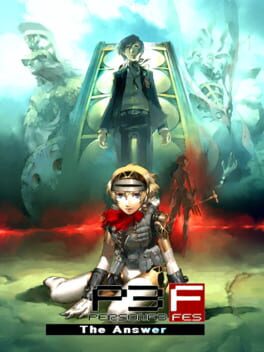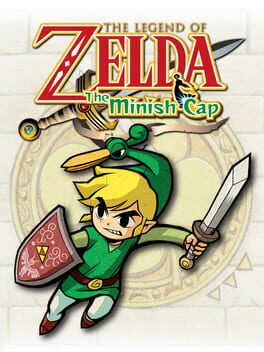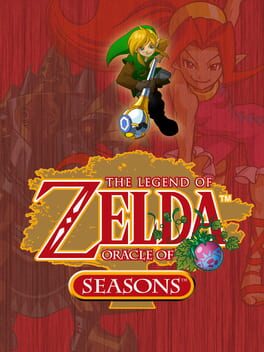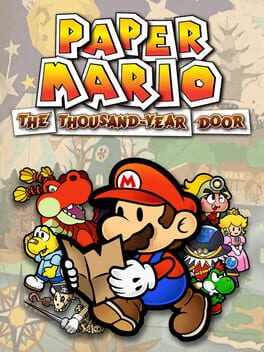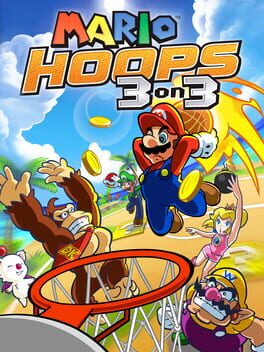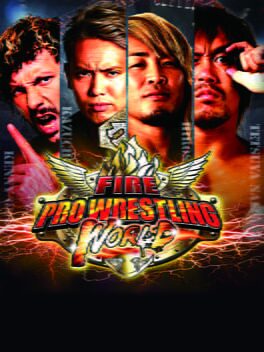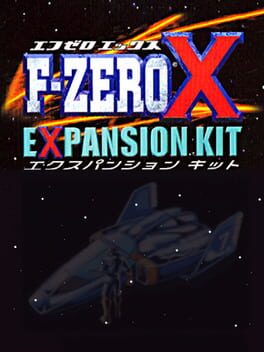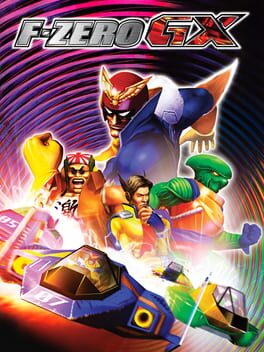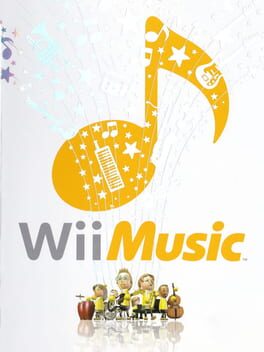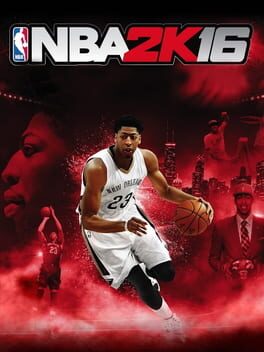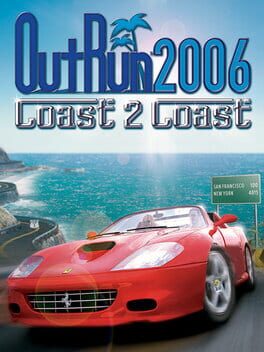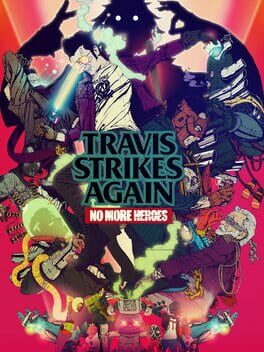Darkshine
27 Reviews liked by Darkshine
Persona 3 Reload
2024
This review contains spoilers
An excellent and surprisingly reserved remake of a game that still feels at odds, in a good way, with persona 4 and 5. For better or worse, reload smoothes out the experience that makes persona 3 so unique and many of the additions feel relatively deliberate and measured to not completely wash out the oppressive feel and emotional plot threads that still managed to break me in the end. The glacial pacing and structure is still there which I don't mind, but I do appreciate the many interactions and events added with SEES in further expanding their team camaraderie and having more to do during the game outside of January. The link episodes are brisk and excellent in fleshing out the male party members, and honestly work much better than dragging out another ten rank social link during the day in a game that could have used more balance between day and night events. Strega is still a one note villain but reload does bless us with Jin and Takaya using the shift mechanic and Takaya pulling out a sick theurgy in his second battle, so it’s still a success for me.
A part of me does feel more could have been done in maintaining the original's resistance within the battling/dungeon traversal as the difficulty suffers quite a lot halfway through, even with Merciless being leagues better and actually operative compared to persona 5's version. As one of ten fans of the original Tartarus, reload's iteration is absolutely beautiful and doubles down to be more gamey and 'addictive' but it does sacrifice the tension and threats of the enemies with the changes to the landscape and battles. The Theurgies are a wonderful treat of power fantasy and spectacle while also adding more interesting dynamics to each member's kit, but I feel that they could have been restricted or handled more conservatively, even if I do enjoy breaking this game in half.
While reload does deliver the darker tone of the original, it's not perfect in translating the dread and oppression well throughout the journey, though this was most apparent to me in specific cutscenes. Take the original and reload's introduction on the train; they follow mostly the same structure but the new animation and direction lacks the bite and visceral feel, specifically in how the original juxtaposes Makoto ominously arriving on the train with Yukari's struggle to summon her persona while Burn my Dread blairs jaggedly and cuts in and out of the scenes. Reload didn't have to replicate this but the new intro feels more standard-fare and less haunting and off-putting, even Makoto's awakening scene falls into this same issue by following the same beats of the original but the transformation of Orpheus into Thanatos ends up being a bit goofy? The cast overall is a dimension friendlier than the original, but I'm not sure this is more due to nuances in the voice direction of the new cast or slight changes in the script, though I feel it is more the former. Still, reload does a solid job with the rest of the cutscenes in the games outside of one of the final animated scenes showing Makoto returning after sealing Nyx. Even some reload iterations I found a bit more memorable than before such as Chidori's sacrifice and Junpai's second persona awakening and Shinji's death (outside of Koromaru low key ruining it with his howling at the end). It's not a complete loss in atmosphere as January itself still encapsulates the impending doom of the fall very well, alongside just turning down the brightness like two-three notches in the options.
Even with the strong effort reload is in delivering persona 3 to the 'masses', it still doesn't strike as a "definitive" version of it, which I think is way better than an end-all-be-all edition ever existing given the small and major differences and interpretations baked into each version at this point. Reload is probably the second best way of experiencing persona 3 as I still would encourage people to play FES if they can. The whole idea of it being "outdated" is categorically false and it still offers so much in its tone and gameplay that reload drastically differs or falters from in many ways. Even still, reload is a wonderful way to experience the best persona game and the 150+ hours I put in on Hard and Merciless have been well worth the return back to Tatsumi Port Island.
And since the remake train has pretty much started with this series now, I should probably run and get a head start on Persona 1 and 2 before those new remakes come out at some point while Persona 6 and its re-released special green edition sits in a cobweb somewhere in the Atlus studios.
A part of me does feel more could have been done in maintaining the original's resistance within the battling/dungeon traversal as the difficulty suffers quite a lot halfway through, even with Merciless being leagues better and actually operative compared to persona 5's version. As one of ten fans of the original Tartarus, reload's iteration is absolutely beautiful and doubles down to be more gamey and 'addictive' but it does sacrifice the tension and threats of the enemies with the changes to the landscape and battles. The Theurgies are a wonderful treat of power fantasy and spectacle while also adding more interesting dynamics to each member's kit, but I feel that they could have been restricted or handled more conservatively, even if I do enjoy breaking this game in half.
While reload does deliver the darker tone of the original, it's not perfect in translating the dread and oppression well throughout the journey, though this was most apparent to me in specific cutscenes. Take the original and reload's introduction on the train; they follow mostly the same structure but the new animation and direction lacks the bite and visceral feel, specifically in how the original juxtaposes Makoto ominously arriving on the train with Yukari's struggle to summon her persona while Burn my Dread blairs jaggedly and cuts in and out of the scenes. Reload didn't have to replicate this but the new intro feels more standard-fare and less haunting and off-putting, even Makoto's awakening scene falls into this same issue by following the same beats of the original but the transformation of Orpheus into Thanatos ends up being a bit goofy? The cast overall is a dimension friendlier than the original, but I'm not sure this is more due to nuances in the voice direction of the new cast or slight changes in the script, though I feel it is more the former. Still, reload does a solid job with the rest of the cutscenes in the games outside of one of the final animated scenes showing Makoto returning after sealing Nyx. Even some reload iterations I found a bit more memorable than before such as Chidori's sacrifice and Junpai's second persona awakening and Shinji's death (outside of Koromaru low key ruining it with his howling at the end). It's not a complete loss in atmosphere as January itself still encapsulates the impending doom of the fall very well, alongside just turning down the brightness like two-three notches in the options.
Even with the strong effort reload is in delivering persona 3 to the 'masses', it still doesn't strike as a "definitive" version of it, which I think is way better than an end-all-be-all edition ever existing given the small and major differences and interpretations baked into each version at this point. Reload is probably the second best way of experiencing persona 3 as I still would encourage people to play FES if they can. The whole idea of it being "outdated" is categorically false and it still offers so much in its tone and gameplay that reload drastically differs or falters from in many ways. Even still, reload is a wonderful way to experience the best persona game and the 150+ hours I put in on Hard and Merciless have been well worth the return back to Tatsumi Port Island.
And since the remake train has pretty much started with this series now, I should probably run and get a head start on Persona 1 and 2 before those new remakes come out at some point while Persona 6 and its re-released special green edition sits in a cobweb somewhere in the Atlus studios.
Kinda disappointing coming to this after experiencing the oracle titles. I initially was going to start with this game after coming off Banjo-Kazooie because of how charming MC's art style is and how much of a fan I am of Wind Waker's art direction and expressive animation. That said, I stopped in the middle of the first dungeon since I was vaguely interested in the Oracle titles and didn't want to experience too much whiplash going from this to the game boy titles, even if they weren't as primitive as I expected. Capcom's philosophy towards this series is interesting to engage with going from the initial duopoly as Minish Cap in all intensive purposes is a culmination of their own spin on the 2D Zelda formula while also wrapping in series elements to keep that Nintendo feel attached to it.
Much discussion around this game, and similar to the Oracle titles, is how underappreciated they are in the Zelda series and even Nintendo's lineup. Funny enough these games all released on the cusp of new successive tech being pushed that I feel overshadowed their releases. Oracle of Ages and Seasons released almost a month before the GBA made its debut in the states in June 2001 and Minish Cap dropped two months after the DS released in November 2004, so it’s not too surprising that these tiles went under the radar for a long time and still kinda are despite being re-released on Nintendo’s online service recently, though Four Swords is still missing. After playing across these titles these past two weeks, I find that there is a lot to appreciate regarding Capcom’s efforts in adding more eccentricties to the pot of 2D Zelda and where they wanted to go and experiment that I feel has at least some tangible influence on the contemporary 3D Zelda titles. The Gust Jar in this game predates the similar Gust Bellows in Skyward sword almost 7 years later so I’d be hard pressed to believe that Nintendo isn’t pulling from these titles for inspiration on where to go with Zelda going forward even if the 2D titles aren’t the ones on the menu now.
Still, Minish Cap continues the tradition of unique design in a few ways with the center piece of this being the shrinking gimmick via the Minish Portals. Link has the ability to shrink to the size of a spect of dust and explore existing areas but with new secrets, puzzles and a whole different scale of things that add depth to a beautifully dressed yet vanilla overworld. I love the detail and scale that this new mechanic brings and emphasizes in the dusty crevices, waterways, and other interconnected and out of the way paths as Minish Link as the world becomes even more alive and comical such as climbing up to the dusty support beams of houses littered with the Minish people taking residence in the cramped spaces and even going outside and walking through grass blades and puddles of water that are now treacherous oceans at this smaller size. Hyrule Town's level design in particular is even more intricate than on the surface once you can shrink down in size and explore the sewers, houses and other spaces not possible at regular size and the mechanic is incorporated to decent effect in the dungeons as well, though a part of me wanted a bit more in terms of how much you can explore as Minish Link since it is still limited and gated by obstacles like blocks of grass and even the pavement of Hyrule Town, along with the number of portals to transform; there isn't no harp of ages in the second half of Oracle of Ages.
The music and sound effects in the dungeons and across the board of MC are a huge step up from the Oracle titles. While most of the selection still contained great and memorable tracks like themes of Holocrum and Labyrnna, the selection is host to many grating sounds and repetitive themes that I turned off the sound of my 3ds at points and just kept playing; shout out to Crown Dungeon in Oracle of Ages for an especially egregious track. Minish Cap thankfully doesn’t have instances like this and the soundtrack smoothly fits the scenery of each setting pretty well and makes them vastly memorable in a good way. They revisit old sounds with tracks such as the Fairy Fountain, Hyrule Field and Dark Hyrule Castle remixing A Link to the Past’s Hyrule Castle theme that serves as a perfect final climax to the game. The soundtrack is also home to new, original tunes that elevate the regions such as the dreamy electro soundscape of the Minish Village, the Temple of Droplets’ air-y and eerie wintery mix of chains and bells, Palace of Winds’ atmospheric orchestral feel representing the tense sky traversal, and finally Hyrule Town’s jovial vibes that sounds classic to all Hyrule hubs but is very distinctive to what MC brings to the table. The mix of both classic tunes and new original material shine to make this my favorite out of the top 2D titles next to Link’s Awakening, maybe even higher.
I've teased this earlier but the overworld in MC is florissantly captivating and booming with life through the extensive animation and artwork in the settings, characters, and music that makes the Oracle titles feel dated. The area theming is very similar to what was done before but still feels new: the vast forestry and fields with familiar monsters and creatures encapsulating Hyrule Field, Hyrule Town’s festive and cozy energy with so much in motion, the rocky and enemy filled terrain of the Gorons' Mt. Crenel with falling boulders and debris, the sleepy atmosphere and haziness of the Minish Forest/Village and Lake Hylia, and the aerial bloom of the high up Cloud tops, a very unique setting for a 2D title that flexes this game’s strength and is impressive in scale for the time. Even the dungeons are sufficiently distinct in their aesthetic and don't feel too similarly visually that plagued many of the Oracle ones.
Speaking of the dungeons while I did praise the visual detail in differentiating the dungeons from one another, this collection is possibly the weakest of the 2D games in terms of puzzles and overall complexity. They emphasize more of seasons' approach with a gentle mix of combat sequences with very surface level puzzles compared to some natural ones that are found in the overworld. They never really ramp up across the small selection outside of the Palace of Winds and the Dark Hyrule Castle which feel appropriately expansive and complex in utilizing all the tools the game gives Link and hit some manner of Labyrinthine design but still more guided compared to what the best Ages had to offer. These last two exhibit an excellent sense of escalation of the game's closing hours but they feel a little too late in how middle of the road most of the journey felt. The shrinking mechanic is used to fun effect at least outside of some of the dungeon items, which I also felt were pretty forgettable, but it feels like it was the only fully fleshed of mechanic used in interesting ways as the dungeons and their puzzles really started to blend together and get a little repetitive. The simplicity itself isn’t a problem as seasons felt like this and I wouldn’t call any of these dungeons outright “bad”, but I was on autopilot for most of them and the dynamism shown visually stood in such sharp contrast to how one note the puzzle solving and exploration was. I didn’t expect this game to be pretty handhold-y as well with Ezlo spoiling some (easy) secrets and solutions to puzzles before I started engaging with them.
Exploration similarly takes a backseat in a way with Minish Cap though not completely as there is still much to find in the world with each new item unlocking new secrets and pathways if they aren’t locked behind the new coin fusion mechanic called the Kinestone to unlock the chests or other secrets in the world. Initially I was a lot more negative on this but I’ve cooled on it since it does provide a cute way of interacting with the NPCs and pets in the world and they generally are okay outside of the RNG needed to get specific pieces if going for 100% which I didn’t do. While I would have preferred that the secrets already existed on the overworld map instead of having to make them spawn by fusing together the coins, I’m fine with this compromise. What is a big disappointment is that the rewards themselves don’t amount to much outside of rupees, shells for figurines or more kinestone pieces and sometimes a piece of heart if lucky, which I ended up with a lot less of comparatively to the other games by the end game. The act of exploring is pretty milquetoast and annoying outside of how some of the dungeon items impact it like the classic flippers and new Cane of Pacci, but even Roc’s Cape is vastly underutilized outside of its dungeon use which is a far cry from the Oracle games using it for some time in the overworld for secret goodies.
For what a charming game this is, I truly feel at odds with the higher acclaim that gets attached to this game and struggle to see Minish Cap as a fundamental improvement over what the Oracle games were doing outside of the visual and music flourishes added with the jump to a whole new and powerful platform. I didn’t speak much on the narrative because while it is more involved than either of the Oracle games, it still is severely underwritten which sucks with how interesting Ezlo and Vaati both are along with the Minish and their whole civilization in Hyrule’s history. MC is representative of Capcom’s efforts on the game boy with a lot of good attached at the hip that I would kill to see the team do again on a new original 2D Zelda title, but it overall feels less inspired and interesting than what they executed before. Even then, Minish Cap can be a decent comfort game to blast through with the some of the most colorful worlds and enticing music of a 2D Zelda game that is criminally short but still sweet in dividends.
Much discussion around this game, and similar to the Oracle titles, is how underappreciated they are in the Zelda series and even Nintendo's lineup. Funny enough these games all released on the cusp of new successive tech being pushed that I feel overshadowed their releases. Oracle of Ages and Seasons released almost a month before the GBA made its debut in the states in June 2001 and Minish Cap dropped two months after the DS released in November 2004, so it’s not too surprising that these tiles went under the radar for a long time and still kinda are despite being re-released on Nintendo’s online service recently, though Four Swords is still missing. After playing across these titles these past two weeks, I find that there is a lot to appreciate regarding Capcom’s efforts in adding more eccentricties to the pot of 2D Zelda and where they wanted to go and experiment that I feel has at least some tangible influence on the contemporary 3D Zelda titles. The Gust Jar in this game predates the similar Gust Bellows in Skyward sword almost 7 years later so I’d be hard pressed to believe that Nintendo isn’t pulling from these titles for inspiration on where to go with Zelda going forward even if the 2D titles aren’t the ones on the menu now.
Still, Minish Cap continues the tradition of unique design in a few ways with the center piece of this being the shrinking gimmick via the Minish Portals. Link has the ability to shrink to the size of a spect of dust and explore existing areas but with new secrets, puzzles and a whole different scale of things that add depth to a beautifully dressed yet vanilla overworld. I love the detail and scale that this new mechanic brings and emphasizes in the dusty crevices, waterways, and other interconnected and out of the way paths as Minish Link as the world becomes even more alive and comical such as climbing up to the dusty support beams of houses littered with the Minish people taking residence in the cramped spaces and even going outside and walking through grass blades and puddles of water that are now treacherous oceans at this smaller size. Hyrule Town's level design in particular is even more intricate than on the surface once you can shrink down in size and explore the sewers, houses and other spaces not possible at regular size and the mechanic is incorporated to decent effect in the dungeons as well, though a part of me wanted a bit more in terms of how much you can explore as Minish Link since it is still limited and gated by obstacles like blocks of grass and even the pavement of Hyrule Town, along with the number of portals to transform; there isn't no harp of ages in the second half of Oracle of Ages.
The music and sound effects in the dungeons and across the board of MC are a huge step up from the Oracle titles. While most of the selection still contained great and memorable tracks like themes of Holocrum and Labyrnna, the selection is host to many grating sounds and repetitive themes that I turned off the sound of my 3ds at points and just kept playing; shout out to Crown Dungeon in Oracle of Ages for an especially egregious track. Minish Cap thankfully doesn’t have instances like this and the soundtrack smoothly fits the scenery of each setting pretty well and makes them vastly memorable in a good way. They revisit old sounds with tracks such as the Fairy Fountain, Hyrule Field and Dark Hyrule Castle remixing A Link to the Past’s Hyrule Castle theme that serves as a perfect final climax to the game. The soundtrack is also home to new, original tunes that elevate the regions such as the dreamy electro soundscape of the Minish Village, the Temple of Droplets’ air-y and eerie wintery mix of chains and bells, Palace of Winds’ atmospheric orchestral feel representing the tense sky traversal, and finally Hyrule Town’s jovial vibes that sounds classic to all Hyrule hubs but is very distinctive to what MC brings to the table. The mix of both classic tunes and new original material shine to make this my favorite out of the top 2D titles next to Link’s Awakening, maybe even higher.
I've teased this earlier but the overworld in MC is florissantly captivating and booming with life through the extensive animation and artwork in the settings, characters, and music that makes the Oracle titles feel dated. The area theming is very similar to what was done before but still feels new: the vast forestry and fields with familiar monsters and creatures encapsulating Hyrule Field, Hyrule Town’s festive and cozy energy with so much in motion, the rocky and enemy filled terrain of the Gorons' Mt. Crenel with falling boulders and debris, the sleepy atmosphere and haziness of the Minish Forest/Village and Lake Hylia, and the aerial bloom of the high up Cloud tops, a very unique setting for a 2D title that flexes this game’s strength and is impressive in scale for the time. Even the dungeons are sufficiently distinct in their aesthetic and don't feel too similarly visually that plagued many of the Oracle ones.
Speaking of the dungeons while I did praise the visual detail in differentiating the dungeons from one another, this collection is possibly the weakest of the 2D games in terms of puzzles and overall complexity. They emphasize more of seasons' approach with a gentle mix of combat sequences with very surface level puzzles compared to some natural ones that are found in the overworld. They never really ramp up across the small selection outside of the Palace of Winds and the Dark Hyrule Castle which feel appropriately expansive and complex in utilizing all the tools the game gives Link and hit some manner of Labyrinthine design but still more guided compared to what the best Ages had to offer. These last two exhibit an excellent sense of escalation of the game's closing hours but they feel a little too late in how middle of the road most of the journey felt. The shrinking mechanic is used to fun effect at least outside of some of the dungeon items, which I also felt were pretty forgettable, but it feels like it was the only fully fleshed of mechanic used in interesting ways as the dungeons and their puzzles really started to blend together and get a little repetitive. The simplicity itself isn’t a problem as seasons felt like this and I wouldn’t call any of these dungeons outright “bad”, but I was on autopilot for most of them and the dynamism shown visually stood in such sharp contrast to how one note the puzzle solving and exploration was. I didn’t expect this game to be pretty handhold-y as well with Ezlo spoiling some (easy) secrets and solutions to puzzles before I started engaging with them.
Exploration similarly takes a backseat in a way with Minish Cap though not completely as there is still much to find in the world with each new item unlocking new secrets and pathways if they aren’t locked behind the new coin fusion mechanic called the Kinestone to unlock the chests or other secrets in the world. Initially I was a lot more negative on this but I’ve cooled on it since it does provide a cute way of interacting with the NPCs and pets in the world and they generally are okay outside of the RNG needed to get specific pieces if going for 100% which I didn’t do. While I would have preferred that the secrets already existed on the overworld map instead of having to make them spawn by fusing together the coins, I’m fine with this compromise. What is a big disappointment is that the rewards themselves don’t amount to much outside of rupees, shells for figurines or more kinestone pieces and sometimes a piece of heart if lucky, which I ended up with a lot less of comparatively to the other games by the end game. The act of exploring is pretty milquetoast and annoying outside of how some of the dungeon items impact it like the classic flippers and new Cane of Pacci, but even Roc’s Cape is vastly underutilized outside of its dungeon use which is a far cry from the Oracle games using it for some time in the overworld for secret goodies.
For what a charming game this is, I truly feel at odds with the higher acclaim that gets attached to this game and struggle to see Minish Cap as a fundamental improvement over what the Oracle games were doing outside of the visual and music flourishes added with the jump to a whole new and powerful platform. I didn’t speak much on the narrative because while it is more involved than either of the Oracle games, it still is severely underwritten which sucks with how interesting Ezlo and Vaati both are along with the Minish and their whole civilization in Hyrule’s history. MC is representative of Capcom’s efforts on the game boy with a lot of good attached at the hip that I would kill to see the team do again on a new original 2D Zelda title, but it overall feels less inspired and interesting than what they executed before. Even then, Minish Cap can be a decent comfort game to blast through with the some of the most colorful worlds and enticing music of a 2D Zelda game that is criminally short but still sweet in dividends.
Very cute, bite-sized 2D Zelda game that strikes a balance from what came before and wasn’t as crusty as I anticipated, very Zelda 1- like in times especially with a thin plot and characters. I don’t have much knowledge of the original Link’s Awakening but the oracle titles separate themselves well in adding small twists on series conventions to give their own identity, especially since the duology wasn’t crafted by Nintendo themselves. The most surprising going through this and still Ages at this point is how much these games lean on adventuring and memorizing the terrain as a means of progression instead of a heavy hand guiding you most of the time. There’s still constraints on places and dungeon order but there isn’t much of a direct path spelling out what you need and have to do outside of what Din says after completing each dungeon; there’s more down time just roaming around and coming across puzzles almost organically and I feel that this is true across both titles, though I felt this a bit more with seasons with how streamlined and less puzzle-centric it is compared to my experience of Ages at this point.
The world design of Holodrum is small and very linear with obvious gated paths or obstacles requiring certain items preventing going forward, but it’s way more open than awakening and even most of the Zelda titles generally feels. Specifically anything revolving around the rod of seasons like puzzles or hidden paths do require added memorization of the world map and exploring the area. I like it more conceptually than in practice since the puzzle solving didn’t amount to much and weren’t as memorable as I expected; finding stumps were a touch annoying outside of using the map but nothing too trial and error-y like the time traveling mechanic with the Harp of Ages can end up being.
New items like the seeds, rings, roc’s cape and the magnetic glove add more weirdness to the journey. The former two add nice customization to combat encounters instead of mostly relying on the regular sword and shield tactic with a set amount of damage given and taken. The seeds have a decent variety of things going on outside of just combat, but the rings did feel somewhat underutilized and negligent outside of a small handful locked behind random chance in mini game challenges or from growing Gasha trees. The latter two were my outright favorites with how unique they are among returning items and the slight satisfaction they brought to some puzzles and late game traversal.
Dungeon wise there isn’t much to talk about as the theming for most are very similar to one another aesthetically and mechanically. I genuinely couldn’t tell you much about 70% of them outside of some shared frustrations with falling down pits. The sword and shield maze is no contest the strongest in its labyrinthine layout that involves many of the items and upgrades gained in the adventure and translating them into pretty meaty and layered puzzles and challenges. Given the developers had to put together 16 dungeons with 8 in each of these games, the results still serve their purpose fine and I liked how some of the dungeons utilized their dungeon specific items in cool ways like anything involving the magnetic glove to zip around and over gaps, but the diminishing returns is pretty obvious with how messy, repetitive and low challenge they fare, surprising in the more combat focused version.
Even though I left not feeling pretty high on this, I appreciate what Capcom did here as someone dying for more 2D Zelda games that Nintendo doesn’t want to do anymore. A remake akin to Link’s Awakening would be great in ironing out the smaller annoyances of menuing and the dizzying sound effects and music, and just bringing this game and its sibling off the dusty game boy color. Revamping how the linked secrets work would be interesting since most of them relied on simple codes rather than interesting discoveries, but the references to the first game played out of the two are cool. Between the two at this point, I’d probably say Ages is a bit more my speed compared to Seasons’ survival emphasis with so many enemy gauntlets and the more simple puzzles than what I’ve seen in Ages so far, but expect something on that soon.
The world design of Holodrum is small and very linear with obvious gated paths or obstacles requiring certain items preventing going forward, but it’s way more open than awakening and even most of the Zelda titles generally feels. Specifically anything revolving around the rod of seasons like puzzles or hidden paths do require added memorization of the world map and exploring the area. I like it more conceptually than in practice since the puzzle solving didn’t amount to much and weren’t as memorable as I expected; finding stumps were a touch annoying outside of using the map but nothing too trial and error-y like the time traveling mechanic with the Harp of Ages can end up being.
New items like the seeds, rings, roc’s cape and the magnetic glove add more weirdness to the journey. The former two add nice customization to combat encounters instead of mostly relying on the regular sword and shield tactic with a set amount of damage given and taken. The seeds have a decent variety of things going on outside of just combat, but the rings did feel somewhat underutilized and negligent outside of a small handful locked behind random chance in mini game challenges or from growing Gasha trees. The latter two were my outright favorites with how unique they are among returning items and the slight satisfaction they brought to some puzzles and late game traversal.
Dungeon wise there isn’t much to talk about as the theming for most are very similar to one another aesthetically and mechanically. I genuinely couldn’t tell you much about 70% of them outside of some shared frustrations with falling down pits. The sword and shield maze is no contest the strongest in its labyrinthine layout that involves many of the items and upgrades gained in the adventure and translating them into pretty meaty and layered puzzles and challenges. Given the developers had to put together 16 dungeons with 8 in each of these games, the results still serve their purpose fine and I liked how some of the dungeons utilized their dungeon specific items in cool ways like anything involving the magnetic glove to zip around and over gaps, but the diminishing returns is pretty obvious with how messy, repetitive and low challenge they fare, surprising in the more combat focused version.
Even though I left not feeling pretty high on this, I appreciate what Capcom did here as someone dying for more 2D Zelda games that Nintendo doesn’t want to do anymore. A remake akin to Link’s Awakening would be great in ironing out the smaller annoyances of menuing and the dizzying sound effects and music, and just bringing this game and its sibling off the dusty game boy color. Revamping how the linked secrets work would be interesting since most of them relied on simple codes rather than interesting discoveries, but the references to the first game played out of the two are cool. Between the two at this point, I’d probably say Ages is a bit more my speed compared to Seasons’ survival emphasis with so many enemy gauntlets and the more simple puzzles than what I’ve seen in Ages so far, but expect something on that soon.
Most of my favorite RPGs are favorites for one specific reason. Maybe the RPG mechanics are interesting and complex, or maybe the story is super well-written, or maybe I just really enjoy being in the world the developers have crafted. TTYD, though, is the whole package.
TTYD's story isn't super deep or anything, but it's incredibly charming and full of character. It's got a very different tone compared to the first game, but it somehow fits Mario super well.
The world is filled with so many memorable characters and locations, most of them decidedly un-Mario-like. NPCs have tons of dialogue which changes as you progress through each chapter, there's a surprising amount of lore about the old city and Thousand-Year Door, and locations are varied and detailed. It all serves to make the world feel like a real, lived-in place. While Super Paper Mario has a more involved story, it doesn't quite nail this aspect.
The visuals are varied and gorgeous, and every single chapter brings you to completely different places. I really love the bold, saturated, outlined style they used for this and SPM. The audio design and music are super unique as well, there really isn't another soundtrack that sounds like this. Prior to Paper Mario, Yuka Tsujiyoko, Yoshito Hirano, Saki Haruyama mainly worked on the Fire Emblem series, so it really sounds like they had a field day making all sorts of bouncy electronic music with fun samples and whatnot instead of more traditionally-orchestrated pieces. It's sometimes a bit overbearing to listen to on its own, but it fits the tone of the game perfectly.
The combat is the star of the show here, I think. It expands on 64's system with new interactions with audience members and stage hazards. Not much of this is explained explicitly in-game, but you have a surprising amount of control over the stage and audience. Combined with the returning badge and leveling systems, these create a mechanically rich battle system that rewards experimentation and knowledge of your and your enemies' moves. What sets it (and most other Mario RPGs) apart from many other JRPGs is the excellent animation and sound design which gives all attacks and guards satisfying audiovisual feedback. This is something you just don't see in many other games in this genre, especially action RPGs which could really benefit from stuff like this. Despite Mario RPGs in general having a reputation of being entry-level JRPGs, the systems here has way more depth than a lot of its competition. It's just that most enemies are comparatively weak, so if you know what you're doing, you can easily steamroll most of the game. Double Pain and Unsimplifier act as impromptu hard modes, but this game could have really used some better enemy AI and more enemy designs in general. There are a lot more pallete swaps compared to 64.
It's true that the overworld design is much more linear and streamlined compared to 64, but in some ways I kind of prefer it's simplicity and straightforwardness. The quest design sometimes works against this by requiring you to backtrack, but it's not nearly as big an issue as it's made out to be. This is a 15-20ish-hour game, and the backtracking is such a small fraction of that.
My only real gripe, aside from the enemy design as mentioned earlier, is how much stuff is directly lifted from 64. TTYD does more than enough of its own thing to stand out, but it would have been nice to see some different species for partners and some new enemy types aside from Spinias, Craws, and Wizzerds. There's a quiz show minigame, Chapter 5 is set on an island, there's a mystery involving a penguin, there are three toad sisters that comment on events throughout the game, there's a puzzle involving buying two items in order, and several other similar scenarios. Almost all the badges were lifted from 64. At times, TTYD can feel like a remixed version of that game. But, like I said, it does more than enough to stand out as a unique experience, so it's not too big of an issue.
Overall, it's just a really fun, charming game with lots of room for interesting builds and experimentation.
TTYD's story isn't super deep or anything, but it's incredibly charming and full of character. It's got a very different tone compared to the first game, but it somehow fits Mario super well.
The world is filled with so many memorable characters and locations, most of them decidedly un-Mario-like. NPCs have tons of dialogue which changes as you progress through each chapter, there's a surprising amount of lore about the old city and Thousand-Year Door, and locations are varied and detailed. It all serves to make the world feel like a real, lived-in place. While Super Paper Mario has a more involved story, it doesn't quite nail this aspect.
The visuals are varied and gorgeous, and every single chapter brings you to completely different places. I really love the bold, saturated, outlined style they used for this and SPM. The audio design and music are super unique as well, there really isn't another soundtrack that sounds like this. Prior to Paper Mario, Yuka Tsujiyoko, Yoshito Hirano, Saki Haruyama mainly worked on the Fire Emblem series, so it really sounds like they had a field day making all sorts of bouncy electronic music with fun samples and whatnot instead of more traditionally-orchestrated pieces. It's sometimes a bit overbearing to listen to on its own, but it fits the tone of the game perfectly.
The combat is the star of the show here, I think. It expands on 64's system with new interactions with audience members and stage hazards. Not much of this is explained explicitly in-game, but you have a surprising amount of control over the stage and audience. Combined with the returning badge and leveling systems, these create a mechanically rich battle system that rewards experimentation and knowledge of your and your enemies' moves. What sets it (and most other Mario RPGs) apart from many other JRPGs is the excellent animation and sound design which gives all attacks and guards satisfying audiovisual feedback. This is something you just don't see in many other games in this genre, especially action RPGs which could really benefit from stuff like this. Despite Mario RPGs in general having a reputation of being entry-level JRPGs, the systems here has way more depth than a lot of its competition. It's just that most enemies are comparatively weak, so if you know what you're doing, you can easily steamroll most of the game. Double Pain and Unsimplifier act as impromptu hard modes, but this game could have really used some better enemy AI and more enemy designs in general. There are a lot more pallete swaps compared to 64.
It's true that the overworld design is much more linear and streamlined compared to 64, but in some ways I kind of prefer it's simplicity and straightforwardness. The quest design sometimes works against this by requiring you to backtrack, but it's not nearly as big an issue as it's made out to be. This is a 15-20ish-hour game, and the backtracking is such a small fraction of that.
My only real gripe, aside from the enemy design as mentioned earlier, is how much stuff is directly lifted from 64. TTYD does more than enough of its own thing to stand out, but it would have been nice to see some different species for partners and some new enemy types aside from Spinias, Craws, and Wizzerds. There's a quiz show minigame, Chapter 5 is set on an island, there's a mystery involving a penguin, there are three toad sisters that comment on events throughout the game, there's a puzzle involving buying two items in order, and several other similar scenarios. Almost all the badges were lifted from 64. At times, TTYD can feel like a remixed version of that game. But, like I said, it does more than enough to stand out as a unique experience, so it's not too big of an issue.
Overall, it's just a really fun, charming game with lots of room for interesting builds and experimentation.
Mario Hoops 3-on-3
2006
It's almost criminal how Nintendo keeps refusing to release this when it has all the best tracks and music. And it has a track creator/editor with the ability to create whole custom cups. And a machine creator/editor. Playing F-Zero X without this feels so incomplete with the bottom corners of the menu missing. If you like X, try emulating this, it's worth it.
F-Zero GX
2003
The guys at Amusement Vision (later Ryu Ga Gotoku Studio) were truly masters of the craft around this time, making two of my favorite games: this and Super Monkey Ball 1. They really knew how to make games that feel great to play on a visceral, physical level - games you can sit down for hours and forget you're even using your hands to control it. You just feel it.
F-Zero GX, on the surface, doesn't appear to do much to distinguish it from X. There aren't any obvious new gimmicks or anything. But AV knew exactly what kind of small, precision changes to make that would make a huge impact. The vehicles control extremely precisely; this is something you should simply experience yourself rather than take my word for it. Track designs are a clear step up from X's, with more memorable, varied layouts. To me, this makes up for the lack of the X Cup and track creator/editor.
The new Story Mode is fun, but I think I prefer the simplicity of a standard Grand Prix. I will say though that you should definitely do all the Master Class GPs before diving into the Story since those are pretty much a tutorial.
And of course, Hidenori Shoji and Daiki Kasho bring a world-class soundtrack which fits the game perfectly. I especially love how the music changes for the final lap.
It's no surprise Nintendo seems hesitant to follow up on this considering Sega's AV team knocked it out of the park.
F-Zero GX, on the surface, doesn't appear to do much to distinguish it from X. There aren't any obvious new gimmicks or anything. But AV knew exactly what kind of small, precision changes to make that would make a huge impact. The vehicles control extremely precisely; this is something you should simply experience yourself rather than take my word for it. Track designs are a clear step up from X's, with more memorable, varied layouts. To me, this makes up for the lack of the X Cup and track creator/editor.
The new Story Mode is fun, but I think I prefer the simplicity of a standard Grand Prix. I will say though that you should definitely do all the Master Class GPs before diving into the Story since those are pretty much a tutorial.
And of course, Hidenori Shoji and Daiki Kasho bring a world-class soundtrack which fits the game perfectly. I especially love how the music changes for the final lap.
It's no surprise Nintendo seems hesitant to follow up on this considering Sega's AV team knocked it out of the park.
Wii Music
2008
NBA 2K16
2015
Oracle of Seasons is a remarkable game for the 2D branch of the franchise. Of the pair of games released for the GBC, the focus of this one is towards a sense of adventure at its purest, setting simple puzzles to solve, but with sections focused on challenge and discovery, making it a highly enjoyable experience.
The novelty that distinguishes this title from the rest, is that here we will travel through a land in which the seasons have gone out of control, so that it can be winter, but from one moment to another can also be spring, summer or autumn, which is not only an aesthetic change for the map, for example, in winter there can be a mountain of snow or frozen rivers, which we can take advantage of to reach places that otherwise would be impossible to reach, but in summer for example, vines grow on some cliffs which allows us to climb them. It's an idea that although not as ambitious as the parallel worlds of A Link to the Past, it's still pretty cool for making exploration more entertaining and interesting, not to mention that exploring Holodrum in different climates/states of the year has its charm. I feel this in turn is also a creative way to expose the difference it makes to have color in a game versus not having it, as in the original GB a concept like this would have been somewhat impossible to execute just having the green/gray scale.
This game takes place in the kingdom of Holodrum, where Din lives, the oracle of the seasons, but after an event is kidnapped and thus the different seasons of the year lose control, so it will be our duty to get the 8 essences of nature of the 8 temples scattered around the kingdom to rescue Din.
The temples generally present a very good and creative design, almost always being quite intuitive for the player, mostly with simple puzzles, but that are still quite entertaining and will require from your part a little ingenuity to be solved, presenting this game also some pretty cool items that have become some of my favorites, such as the magnetic gloves. I especially like the fact how in this game hearts do matter, as unlike most Zelda games, the enemies and boss battles can be a bit challenging, not that it's a difficult game, but if you get overconfident you could end up seeing the Game Over screen on more than one occasion.
Something I love is that the exploration and discovery factor of the early Zelda games is very present in this title. It pays to be curious and attentive, as many times some puzzles or secrets are revealed when we go to a place with a certain season. There are a lot of references to the first Zelda game, like some of the temples, bosses or even some caves with old people inside that have strange dialogues and sometimes can be tremendous trolls, and curiously, there are also references and inspiration from games like Mega Man, which we can notice especially in those 2D platforming type sections. If you played Mega Man X, the final boss will look familiar.
Conclusion
It's certainly a game with a very good design and pacing, it never feels boring, and the mechanics of switching between seasons made the mere fact of exploring more engaging. If you're wondering where the inspiration from the Mega Man games and the references to the first game in the franchise came from, it's because this game was made by Capcom, and started out being developed as a remake of the first title, but then evolved into a completely different game, and in retrospect, I think it was for the best, as it has become one of my favorites.
Secret 1: backloggd.com/u/M----------------
→ The Legend of Zelda: Oracle of Ages - Review
The novelty that distinguishes this title from the rest, is that here we will travel through a land in which the seasons have gone out of control, so that it can be winter, but from one moment to another can also be spring, summer or autumn, which is not only an aesthetic change for the map, for example, in winter there can be a mountain of snow or frozen rivers, which we can take advantage of to reach places that otherwise would be impossible to reach, but in summer for example, vines grow on some cliffs which allows us to climb them. It's an idea that although not as ambitious as the parallel worlds of A Link to the Past, it's still pretty cool for making exploration more entertaining and interesting, not to mention that exploring Holodrum in different climates/states of the year has its charm. I feel this in turn is also a creative way to expose the difference it makes to have color in a game versus not having it, as in the original GB a concept like this would have been somewhat impossible to execute just having the green/gray scale.
This game takes place in the kingdom of Holodrum, where Din lives, the oracle of the seasons, but after an event is kidnapped and thus the different seasons of the year lose control, so it will be our duty to get the 8 essences of nature of the 8 temples scattered around the kingdom to rescue Din.
The temples generally present a very good and creative design, almost always being quite intuitive for the player, mostly with simple puzzles, but that are still quite entertaining and will require from your part a little ingenuity to be solved, presenting this game also some pretty cool items that have become some of my favorites, such as the magnetic gloves. I especially like the fact how in this game hearts do matter, as unlike most Zelda games, the enemies and boss battles can be a bit challenging, not that it's a difficult game, but if you get overconfident you could end up seeing the Game Over screen on more than one occasion.
Something I love is that the exploration and discovery factor of the early Zelda games is very present in this title. It pays to be curious and attentive, as many times some puzzles or secrets are revealed when we go to a place with a certain season. There are a lot of references to the first Zelda game, like some of the temples, bosses or even some caves with old people inside that have strange dialogues and sometimes can be tremendous trolls, and curiously, there are also references and inspiration from games like Mega Man, which we can notice especially in those 2D platforming type sections. If you played Mega Man X, the final boss will look familiar.
Conclusion
It's certainly a game with a very good design and pacing, it never feels boring, and the mechanics of switching between seasons made the mere fact of exploring more engaging. If you're wondering where the inspiration from the Mega Man games and the references to the first game in the franchise came from, it's because this game was made by Capcom, and started out being developed as a remake of the first title, but then evolved into a completely different game, and in retrospect, I think it was for the best, as it has become one of my favorites.
Secret 1: backloggd.com/u/M----------------
→ The Legend of Zelda: Oracle of Ages - Review
Super Mario 64
1996
This is a game for Suda51 fans, and literally no one else.
Narratively speaking, this game goes beyond what we've come to expect from the No More Heroes series, and I think it does an excellent job really showing Travis as a character and expanding more on the world he inhabits. I also think this game does a great job appealing to long-time fans of both No More Heroes as well as all of Suda51's titles, both through extensive cameos and great references, the crossover aspect and the build up to the third game was really the driving force that kept me playing. The DLC level is easily the best section as well, and features some really amazing tracks and actual fun level design.
However, where I think this game is fundamentally flawed is through it's gameplay. It hurts me to say that the top down perspective mixed with the hack in slack gameplay is a total slog to get through, and I found myself being unable to play for long sessions at a time due to actually becoming so bored I was uninterested in playing. Combine that with an effectively useless currency system and a slow and lackluster character progression, this game's hardest challenge is trying to not give up playing it.
If you really like the series and Suda as a creator check this game out, otherwise probably just look up a playthrough on youtube.
Narratively speaking, this game goes beyond what we've come to expect from the No More Heroes series, and I think it does an excellent job really showing Travis as a character and expanding more on the world he inhabits. I also think this game does a great job appealing to long-time fans of both No More Heroes as well as all of Suda51's titles, both through extensive cameos and great references, the crossover aspect and the build up to the third game was really the driving force that kept me playing. The DLC level is easily the best section as well, and features some really amazing tracks and actual fun level design.
However, where I think this game is fundamentally flawed is through it's gameplay. It hurts me to say that the top down perspective mixed with the hack in slack gameplay is a total slog to get through, and I found myself being unable to play for long sessions at a time due to actually becoming so bored I was uninterested in playing. Combine that with an effectively useless currency system and a slow and lackluster character progression, this game's hardest challenge is trying to not give up playing it.
If you really like the series and Suda as a creator check this game out, otherwise probably just look up a playthrough on youtube.
